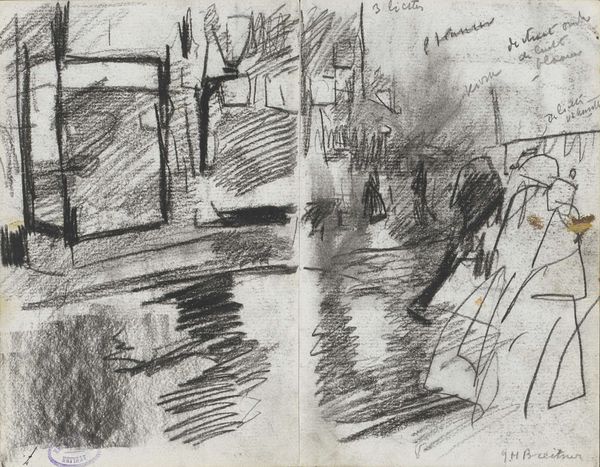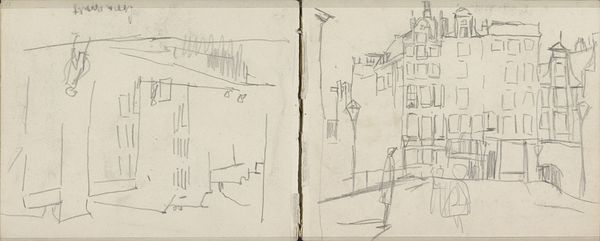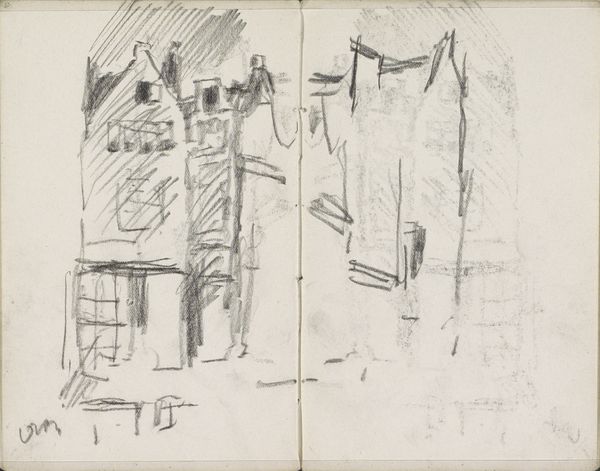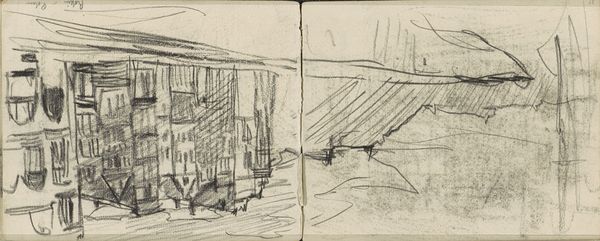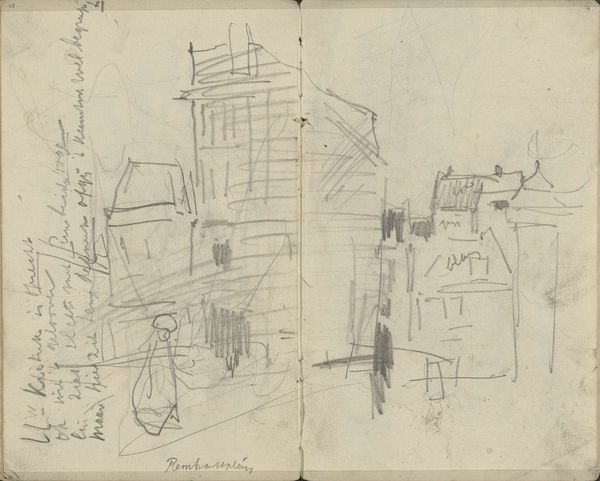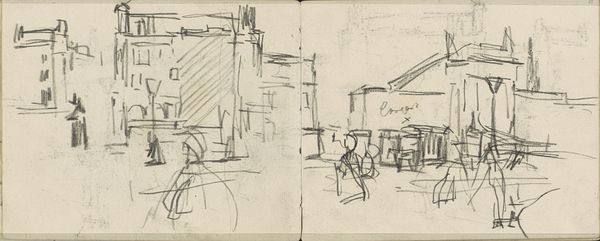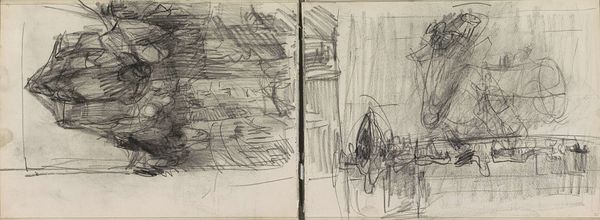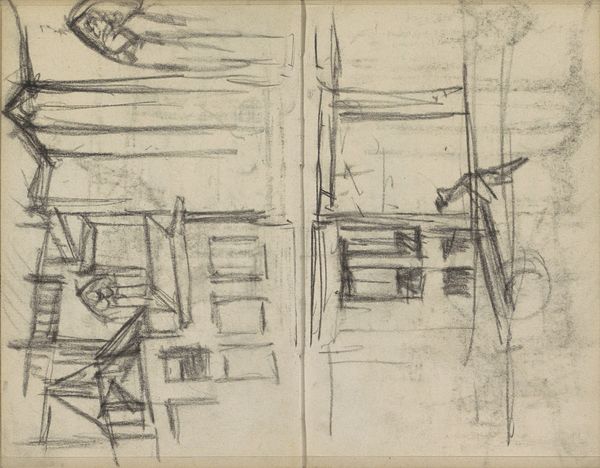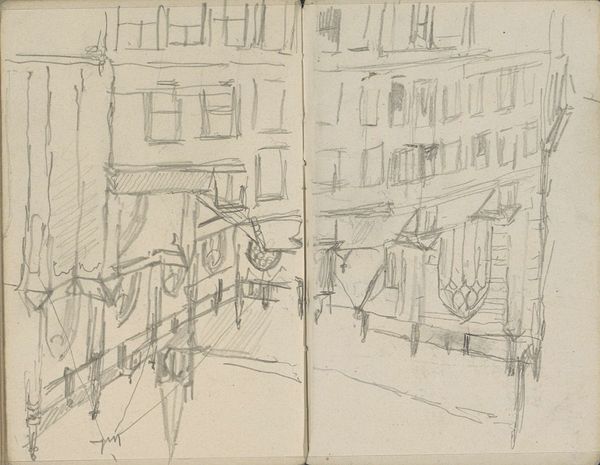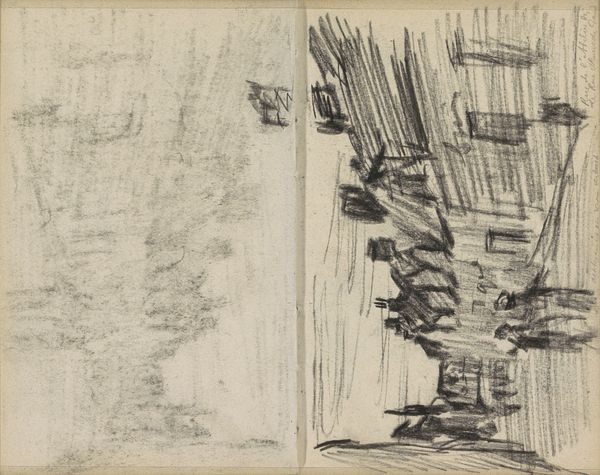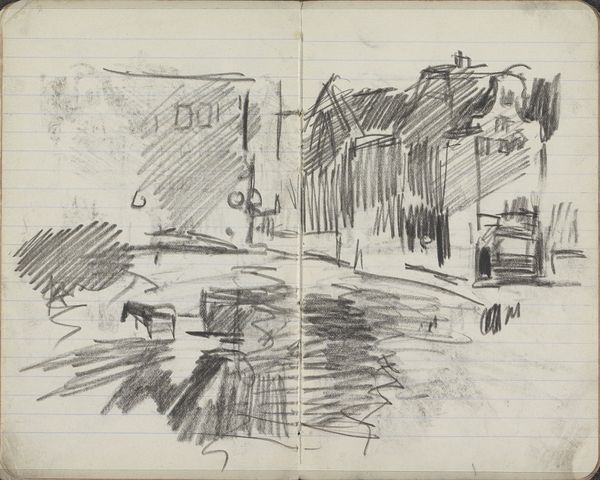
Copyright: Rijks Museum: Open Domain
Curator: Before us is George Hendrik Breitner's "Gezicht op de Prinsengracht te Amsterdam," a work dating from around 1893 to 1899. It's rendered in pencil and ink on paper. Editor: It feels so immediate. Raw, almost. Like a snapshot pulled straight from a personal sketchbook. I get a sense of the rapid pace of city life distilled into a few hurried strokes. Curator: Breitner was known for his depictions of Amsterdam, particularly street scenes and working-class life. He positioned himself as a 'painter of the people'. What this sketch reveals about that relationship is particularly interesting. The work almost functions like social reportage, capturing a slice of daily existence on Prinsengracht. Editor: Exactly. I am fascinated by the marks themselves: The thickness of the lines seems deliberate, emphasizing certain architectural features while obscuring others. The material fact of pencil on paper serves as an important index. Think about the labor, the act of *recording*. Curator: His choice to depict a mundane, everyday scene challenges academic traditions and elevates the ordinary to the realm of art. There's an undercurrent of social commentary here, as Breitner, rejecting traditional allegorical or mythical subjects, instead focuses on documenting a more accurate and inclusive reflection of Dutch society. How do we interpret his view as someone with artistic agency capturing what surrounds them, at speed and through process? Editor: Speed being key here: There's something deeply authentic in its seeming lack of pretense. The visible process contributes to the feeling of immediacy, but that directness also obscures, to some degree, what's literally outside of his own practice of *making* that sketch. Curator: You're right. The sketch's fragmented nature means that interpretations are dependent on what details were included and excluded; his presence inevitably influenced the landscape. By analyzing the work through its absences, we can question its representation of society. Editor: I am keen to learn more about the pens and pencils he favored! Because if we understand the implements Breitner wielded and their particular qualities... then perhaps we might better grasp how he chose to capture this bustling slice of Amsterdam's landscape, through the marks that materialize within that act. Curator: That connection you make to materials and the lived experience of creation really opens new avenues to understanding the artwork. Editor: Likewise, your points about Breitner as a documentarian gives fresh appreciation for how socially and culturally relevant the work really is.
Comments
No comments
Be the first to comment and join the conversation on the ultimate creative platform.
